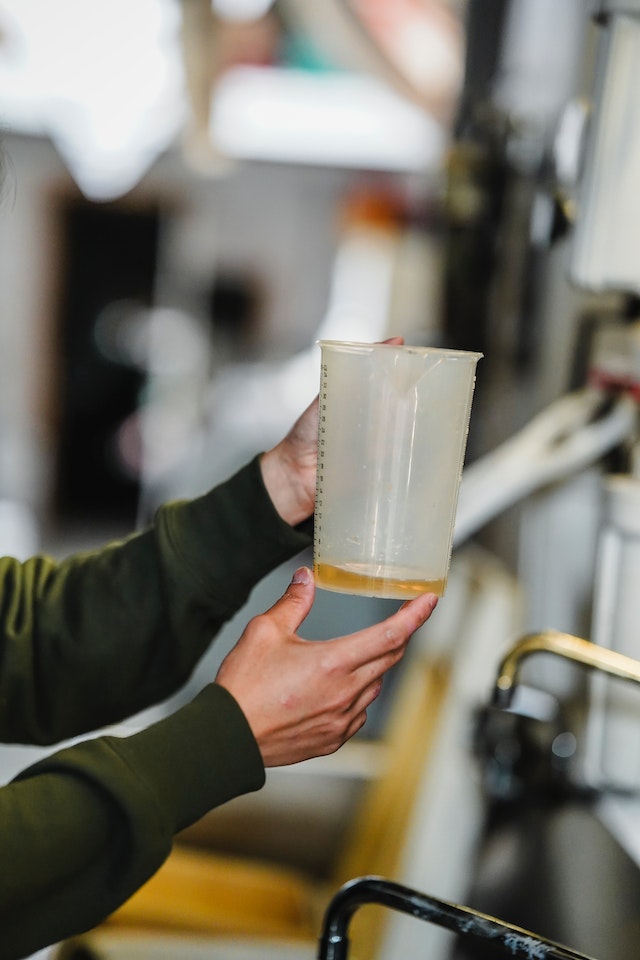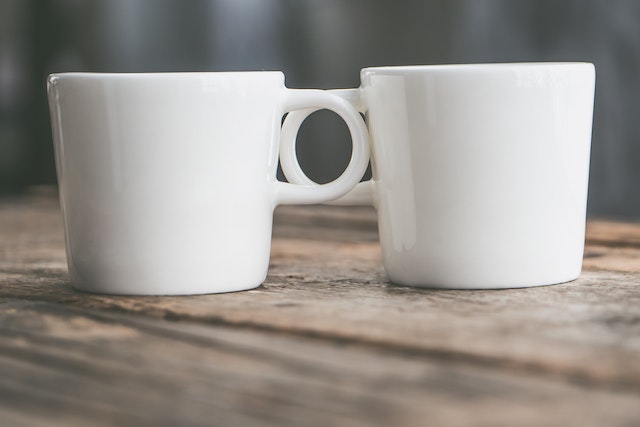Introduction
Water is the elixir of life, and it’s essential to stay well-hydrated for our overall health and well-being. In our quest for convenient hydration, we often turn to bottled water. But have you ever wondered how many cups are in water bottle are in that standard water bottle you grab on the go? This article aims to demystify the cup measurement within water bottles, helping you better manage your daily hydration.

Table of Contents
Understanding the Standard Water Bottle
To start, we must define what constitutes a standard water bottle. This standard can vary from region to brand, but let’s focus on the expected standard in the United States.

In the United States, a typical water bottle contains 16.9 fluid ounces of water. This measurement, often rounded to 16.9 oz, has become the industry norm for a single-serve water bottle.
Converting Ounces to Cups
Now that we know the size of a standard water bottle let’s convert it into cups. In the U.S., one cup is equivalent to 8 fluid ounces. To calculate how many cups are in a standard 16.9-ounce water bottle, we use the following formula:

16.9 fluid ounces ÷ 8 fluid ounces per cup ≈ 2.11 cups
So, approximately 2.11 cups of water are in a standard 16.9-fluid-ounce (500 ml) water bottle.
Why Knowing the Cup Measurement Matters
Understanding the measurement of cups are in water bottle has various practical implications:

1. Hydration Tracking
Knowing that a standard bottle contains about 2.11 cups helps you monitor your daily water intake more accurately. To drink 8 cups of water daily, you must consume roughly four standard water bottles.
2. Cooking and Recipes
Precise measurements are crucial in cooking and baking. If a recipe calls for cups of water, you can now easily estimate how many bottles you’ll need.
3. Portion Control
Knowing the cup equivalent in a bottle can assist with portion control when managing your daily calorie or sugar intake. You can more effectively track the calories or grams of sugar consumed in beverages.
4. Travel and Convenience
On the go, especially during travel, knowing the cup measurement in a bottle helps you maintain your hydration needs efficiently. You can gauge how much water you should consume during a flight or a road trip.
Different Water Bottle Sizes
It’s important to note that not all water bottles are created equal in size. The 16.9-ounce bottle is a standard, but you’ll encounter a variety of options in the market. Here are some standard water bottle sizes and their cup equivalents:
- 8-Ounce Bottle: This smaller bottle contains 8 fluid ounces, equivalent to 1 cup.
- 12-ounce Bottle: A 12-ounce bottle holds 1.5 cups of water.
- 20-ounce Bottle: This giant bottle carries 2.5 cups of water.
- 32-ounce Bottle: A 32-ounce bottle is equal to 4 cups of water.

Considerations for Your Hydration Needs
Understanding the cup measurement within various water bottle sizes is valuable because it helps you tailor your hydration to your needs. Here are some considerations:
1. Daily Hydration Goal: Determine your daily hydration goal based on age, activity level, and climate. The standard recommendation of 8 cups (64 ounces) is a starting point, but individual needs vary.
2. Bottle Choice: Choose the size that aligns with your daily hydration goal. If you aim to drink eight cups of water daily, carrying a 32-ounce bottle could help you track your progress more efficiently.
3. Environmental Impact: While bottled water is convenient, consider the environmental impact of single-use plastic bottles. Opt for reusable bottles to reduce waste and save money in the long run.
4. Personal Preferences: Some individuals prefer sipping from smaller bottles throughout the day, while others prefer larger bottles with fewer refills. Find what works best for you and your lifestyle.
Why is it essential to the number of cups are in water bottle?
Understanding the number of cups are in water bottle is crucial for:
- Accurate Hydration: It helps you precisely monitor and meet your daily water intake goals.
- Recipe Accuracy: Ensures recipes with specific liquid measurements are prepared correctly.
- Portion Control: Aids in estimating calorie and sugar intake for better diet management.
- Convenience: Facilitates efficient hydration planning, especially during travel or busy days.
- Personalized Hydration: Allows customization of daily water goals based on individual needs.
- Health Benefits: Supports overall health by maintaining proper hydration levels.
Differentiate between ounces and cups
Ounces (fl. oz):
Ounces are primarily used as a unit of volume, and their interpretation varies depending on the substance being measured.
- Liquid Ounces: When measuring liquids like water, milk, or juice, an ounce (fl. oz) typically represents about 1/8th of a cup. Eight fluid ounces make up 1 cup. This interpretation is common in beverage-related measurements.
- Weight Ounces (oz): In contrast, ounces (oz) used for dry ingredients represent weight, not volume. For example, 1 ounce of flour does not equal 1 fl. oz of water. The weight equivalent of 1 fluid ounce varies among different substances due to differences in density.
Cups:
Cups are a unit of volume, predominantly used for measuring both liquids and occasionally dry ingredients.
- Liquid Cups: One cup (c) of liquid equals 8 fluid ounces (fl. oz). This standard is consistent when measuring water, milk, and other beverages. It’s vital to note that 1 cup of water is not equivalent in weight to 1 cup of flour due to different densities.
- Dry Cups: Measuring dry ingredients like flour, sugar, or rice with cups refers to their volume, not weight. While a cup of flour and sugar occupy the same volume, their consequences differ due to varying densities.

When to Use Each Unit:
- Ounces (fl. oz):
- Use when measuring liquids such as water, milk, or juice.
- Follow recipes that specify fluid ounces for precise liquid measurements.
- Cups:
- Use when measuring liquids in larger quantities for convenience.
- Measure dry ingredients like flour, sugar, or grains.
- Adhere to recipes that specify cups for both liquid and dry measurements.
Conclusion about how many cups are in water bottle
understanding how many cups are in water bottle, whether a standard 16.9-ounce bottle or another size, empowers you to manage your hydration effectively. It aids in tracking your daily water intake, assists in cooking and recipe preparation, facilitates portion control, and enhances your convenience during travel. Remember that your daily hydration needs may vary, so it’s essential to customize your water bottle choice to suit your requirements. Ultimately, staying hydrated is vital to a healthy and balanced lifestyle, and knowing your water bottle’s cup measurement is a practical step toward that goal.

Frequently Asked QUESTION (FAQS) about how many cups are in water bottle
1. How many cups are in a standard water bottle?
A standard water bottle in the United States, typically containing 16.9 fluid ounces (500 milliliters) of water, is roughly equivalent to 2.11 cups.
2. Are water bottle sizes the same worldwide?
No, water bottle sizes can vary by region and brand. The standard size mentioned earlier is expected in the United States, but other areas may have different standard sizes.
3. How do I convert the size of a cups are in water bottle if it’s different from the standard 16.9 ounces?
To convert the size of a cups are in water bottle , divide the number of fluid ounces by 8, as 1 cup is equivalent to 8 fluid ounces. For example, a 32-ounce water bottle equals approximately 4 cups (32 oz ÷ 8 oz per cup = 4 cups).
4. Are there standard cup measurements for water bottles of different sizes?
No, the cup measurement of a water bottle depends on its volume. Different-sized water bottles will contain different numbers of cups. You can use the formula mentioned earlier (fluid ounces ÷ 8) to calculate the cup equivalent for any bottle size.
5.How much is 2 cups of water?
Two cups of water equals 16 fluid ounces or approximately 473 milliliters.
6.How much is 1 cup of?
The measurement of 1 cup can vary depending on what you’re measuring. Usually, 1 cup equals 8 fluid ounces or approximately 237 milliliters. However, when measuring dry ingredients like flour or sugar, 1 cup typically equals 125-130 grams.
7. Is 250ml one cup of water?
In many countries, including the United States, 1 cup is commonly considered to be equivalent to 8 fluid ounces (about 237 milliliters). However, in some places, especially in Europe and parts of Asia, a cup may be defined as 250 milliliters. In those regions, 250 milliliters is considered one cup of water.
8. Is 4 cups of water a lot?
The everyday recommended water intake varies depending on age, gender, activity level, and climate. As a general guideline, drinking 4 cups of water a day (32 fluid ounces or about 946 milliliters) is typically not considered a lot and is often considered the minimum recommended daily intakes.
9. What is a regular cup of water?
A regular cup of water, commonly understood in the United States and many other countries, is typically 8 fluid ounces or approximately 237 milliliters. This measurement is often used for drinking water and in recipes for cooking and baking. However, it’s important to note that cup measurements can vary in different regions, so what’s considered “normal” may differ depending on where you are.
